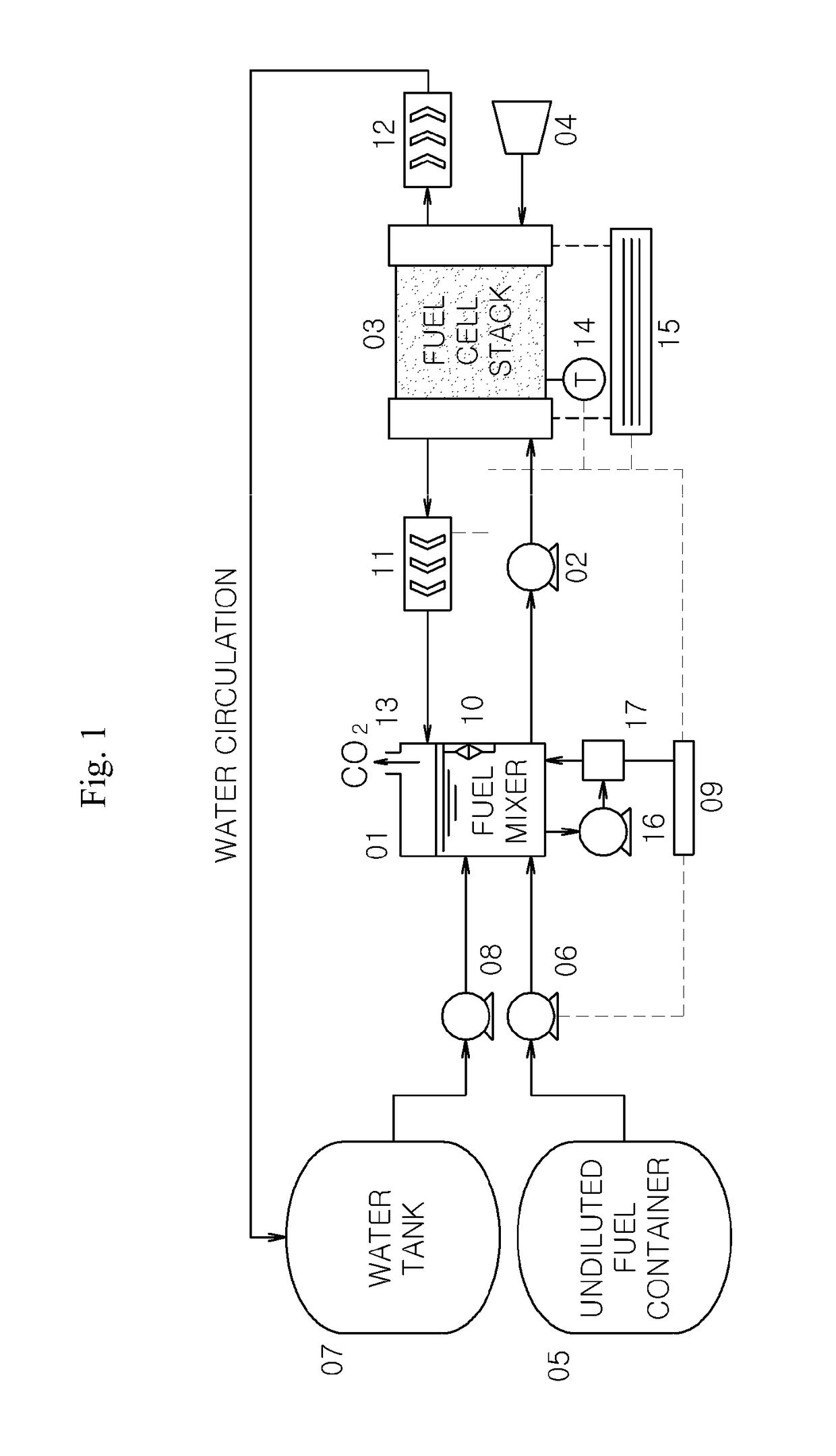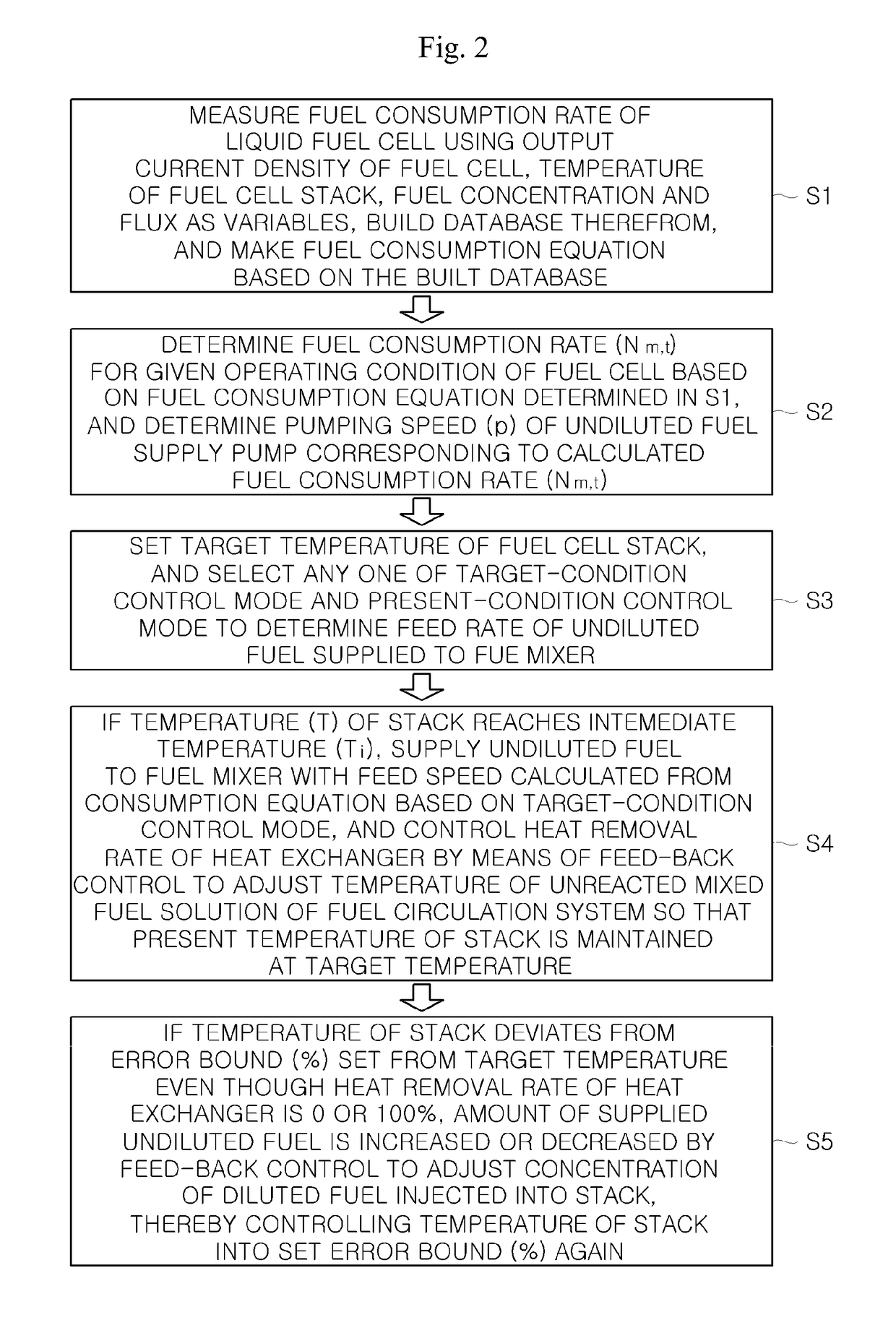Method and apparatus for simultaneous controlling of fuel concentration and temperature of liquid fuel by sensor-less and temperature-control based feed-back control, liquid fuel cell apparatus using the same
a technology of liquid fuel and temperature control, which is applied in the direction of fuel cells, electrical appliances, electrochemical generators, etc., can solve the problems of reducing the energy efficiency of fuel, reducing the performance, and deteriorating the performance of the fuel cell, so as to reduce the power consumed for operation and reduce the price of the apparatus. , the effect of simple and small design
- Summary
- Abstract
- Description
- Claims
- Application Information
AI Technical Summary
Benefits of technology
Problems solved by technology
Method used
Image
Examples
Embodiment Construction
[0090]1: fuel mixer[0091]2: diluted fuel supply pump[0092]3: fuel cell stack[0093]4: air blowing fan[0094]5: undiluted fuel container[0095]6: undiluted fuel supply pump[0096]7: water tank[0097]8: water supply pump[0098]9: concentration controller using a concentration sensor[0099]10: liquid level meter[0100]11: anode heat exchanger[0101]12: cathode heat exchanger[0102]13: carbon dioxide gas discharger[0103]14: temperature measuring device[0104]15: output voltage / current measurement device[0105]16: sensor pump (for supplying a diluted fuel to a concentration sensor)[0106]17: methanol concentration sensor[0107]18: control device of a liquid fuel cell not using a concentration sensor
DETAILED DESCRIPTION
[0108]Example embodiments now will be described more fully hereinafter with reference to the accompanying drawings, in which example embodiments are shown. The present disclosure may, however, be embodied in many different forms and should not be construed as limited to the example embod...
PUM
| Property | Measurement | Unit |
|---|---|---|
| temperature | aaaaa | aaaaa |
| temperature | aaaaa | aaaaa |
| output current density | aaaaa | aaaaa |
Abstract
Description
Claims
Application Information
 Login to View More
Login to View More - R&D
- Intellectual Property
- Life Sciences
- Materials
- Tech Scout
- Unparalleled Data Quality
- Higher Quality Content
- 60% Fewer Hallucinations
Browse by: Latest US Patents, China's latest patents, Technical Efficacy Thesaurus, Application Domain, Technology Topic, Popular Technical Reports.
© 2025 PatSnap. All rights reserved.Legal|Privacy policy|Modern Slavery Act Transparency Statement|Sitemap|About US| Contact US: help@patsnap.com



